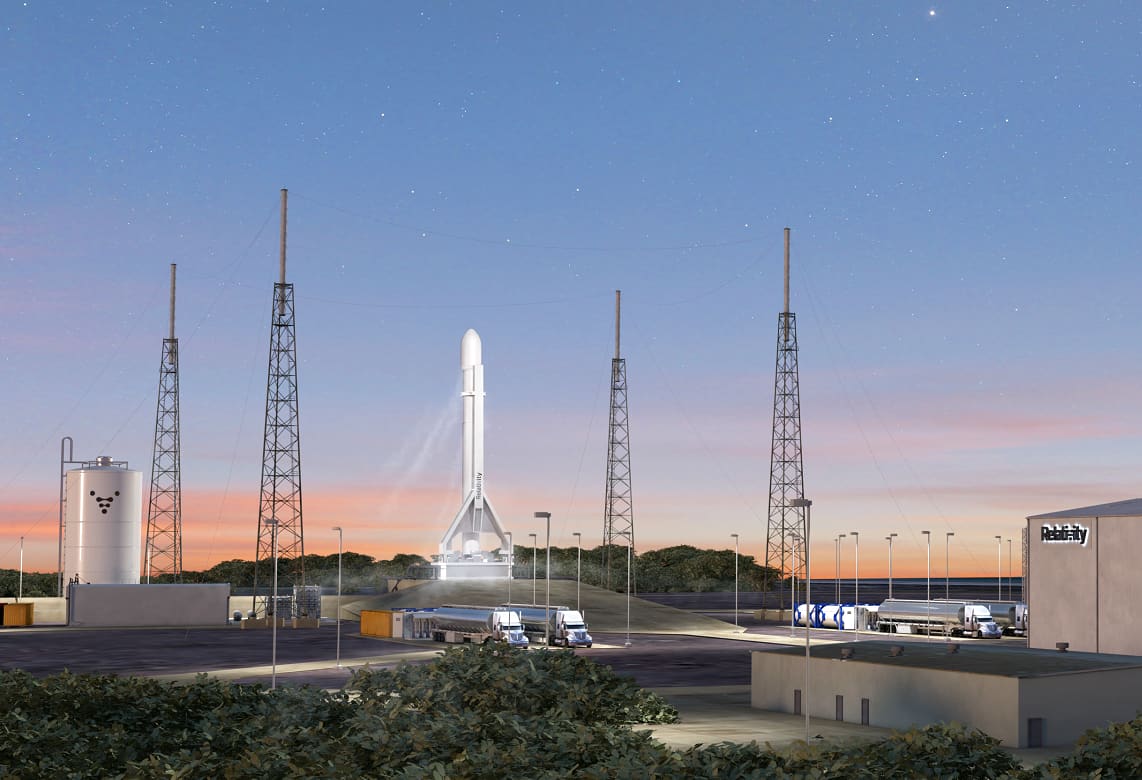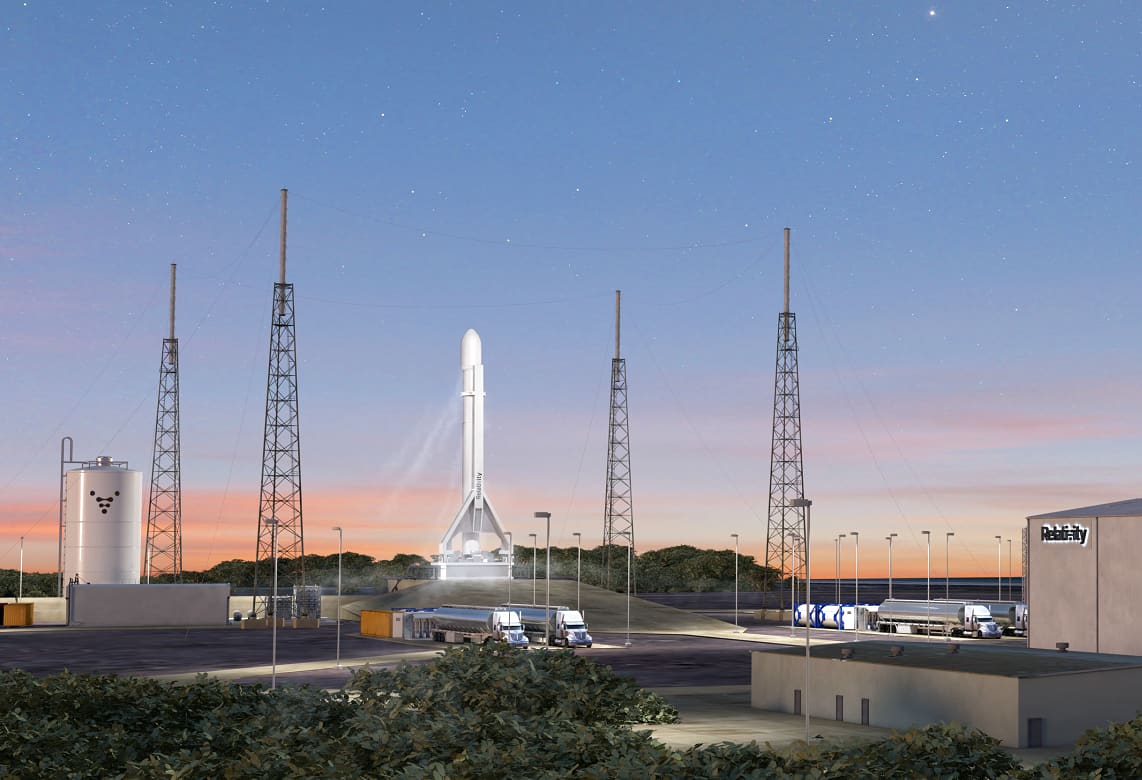
The Infrastructure Facilitating Relativity Space’s Success
The rocket development and building process are extremely complicated. There is an immense amount of work that goes into each aspect. Not to mention the size and power involved in the testing process. All of this requires very high quality and often massive facilities for all different aspects of creating, testing, and more. Relativity Space has a lot of current and future infrastructure in place to help with its goal.
Infrastructure is a key component of any launch vehicle development. Relativity Space uses multiple test, production, and launch sites to continue work on launch vehicles such as Terran 1 and R. These facilities are spread throughout the country to ensure every requirement is met. Relativity has also partnered with big agencies such as NASA and the U.S. Air Force for additional help.
While Relativity Space is a somewhat new private space company, they are making great strides in the space industry. This is partially thanks to their continued ambition along with work towards different necessary facilities. As important as a rocket’s infrastructure can be, it’s often ignored. However, these facilities are not only very important but also quite interesting and complicated as well.
What Does Rocket Infrastructure Look Like?

As I mentioned prior, rockets are not only complex but also quite big and powerful. A lot more development, planning, and work are needed prior to testing a rocket for example, compared to other projects. Looking at a lot of different space agencies and companies, you can see a similar pattern of rocket infrastructure. This usually consists of three main aspects including a production, launch, and test site. These are three of the main components that go into the process of creating a rocket. One of the first important aspects is the production site of a launch vehicle. Here the company or agency often works in a massive building or facility, working on assembling and creating the long list of necessary parts for a rocket.
Then there are the different necessary test sites. These not only have to be extremely strong but also in a very specific location. The process of testing a rocket engine for example produces an immense amount of power, noise, and could easily explode if something were to go wrong. Finally, there are launch sites. Whether you are looking at a company or agency launching a small-lift launch vehicle or a heavy-lift launch vehicle, the launch site is very complex. Similar to a test site for an engine, the launch site usually involves transporting the rocket, standing it upright, and much more. These are common themes and features you will see across the majority of the space industry including Relativity Space.
Relativity Space Facilities

Test Sites – The first part of Relativity Space’s infrastructure that I want to point out is the test stands. Relativity Space has three main test facilities. These sites are called the E2, E3, and E4 test facilities. Starting with the E2 test site located at Stennis Space Center in Mississippi. This test facility works with the development, qualification, and acceptance testing of Aeon engines. The site consists of a 25-acre test complex including specialized, ultra-high pressure fluid systems rated for up to 15,000 psig. It also includes two large test cells rated for horizontally-mounted engines and for vertically-mounted vehicle stages or engines. Additionally, it can handle up t 324,000 lbs of thrust.
The next test facility is E3 located in the same area. Since 2016 Relativity has been conducting development tests of its 3D-printed Aeon engine at the E3 Engine Testing Facility. This site withstands up to 25,000 lbs of thrust at the engine stand and has helped complete over 200 hotfires across 14 engine iterations. Finally, there is the E4 test facility also located in the same area. The E4 facility will work on the development, qualification, and acceptance of not only the Aeon but also Terran. E4 consists of a 25-acre test complex including 15,000 ft2 of specialized test infrastructure. There are also four large test cells rated for both vehicles and engines.
Launch Sites – The next necessary part of any space-related company is a launch site. Here I will focus on Relativity Space’s plans for its future main launch sites for different vehicles. Specifically, Relativity Space has plans for two future launch sites. One is located at Vandenberg Air Force Base and the other is in Cape Canaveral, Florida. Starting with the Vandenberg location, Relativity has a right of entry agreement with the U.S. Air Force for the development of rocket launch facilities at Vandenberg Air Force Base. These launch capabilities offer Relativity Space a complete range of orbital inclinations, including polar and sun-synchronous orbits. This is due to the launch site’s location towards the West Coast in California. Then there is Launch Complex 16 in Cape Canaveral, Florida. Relativity Space is the first and only venture-backed company with a right of entry directly with the U.S. Air Force at historic Launch Complex 16. Here they will have the launch pad, propellant farms, and gas storage. Additionally, there will be an integration hanger, logistics area, payload processing facility, and launch control center.
Production – Finally there is the production aspect of Relativity Space. This includes three main factories located in different areas of the country. Starting with the HQ and Factory in Long Beach California. With 120,000 sq. ft., Relativity Space’s brand new headquarters and expanded factory will host not only the company’s business operations but an unprecedented manufacturing facility. Here it will provide integrated machine learning, software, robotics, and much more. The next facility is the office and factory in Los Angeles, California. This factory and office encompass four buildings with 20,000 sq. ft. of office space and production facilities. This facility houses design, engineering, and production of their Terran 1 launch vehicle and Stargate printers.
The final factory that plays an important role in the development of everything Relativity Space is working on is located near the test facilities in Mississippi. Relativity secured a 20-year exclusive use agreement for a 220,000 sq. ft. factory building at NASA Stennis Space Center to house one of the Stargate factories and to speed up the development of Terran 1. Due to the factory’s close proximity to the three test sites I mentioned prior, the private company can offer greater flexibility to their customers. The building consists of an 80-foot high bay, a 50 ton overhead crane, and existing industrial infrastructure. The building is also only 2 miles away from the multiple test sites. This means Relativity can easily build and develop then transport and test any necessary equipment.
Conclusion
Rockets are extremely complicated and dangerous vehicles. An immense amount of effort goes into the development, production, and testing process. A lot of thought needs to go into each aspect because of size, safety, and much more. Relativity Space is working on a lot of different necessary infrastructure that will help propel the company to great achievements if they are successful. This includes multiple launch, production, and test sites located around the country. Each facility has a purpose and when combined with the others, helps produce a one-of-a-kind launch vehicle. In Relativity Space’s case this would be the Terran 1, and R, launch vehicle along with the Aeon engines. We will have to wait and see how Relativity develops these facilities and the impact it has on the company’s future rocket success.
